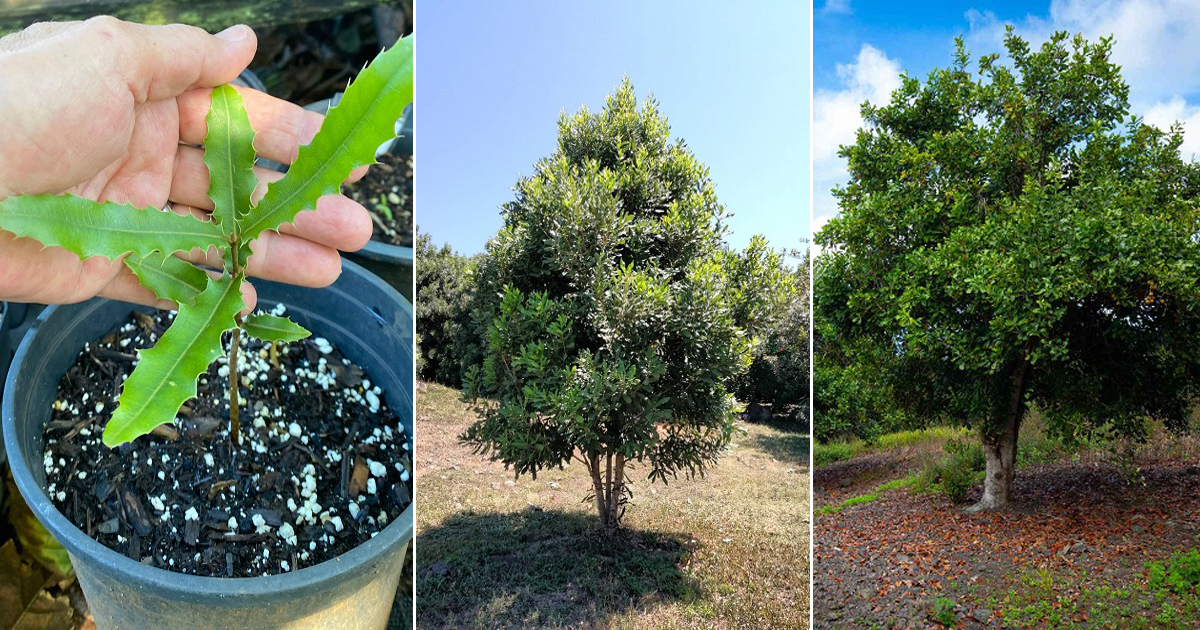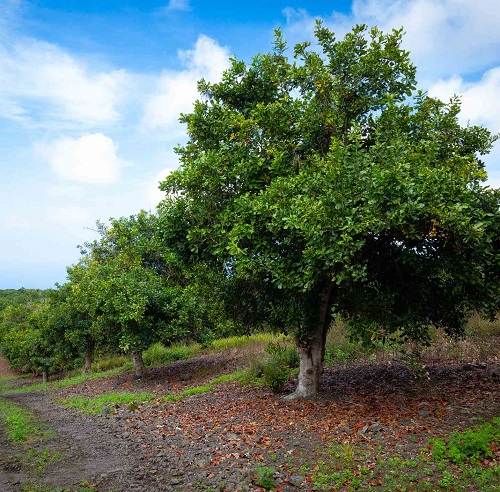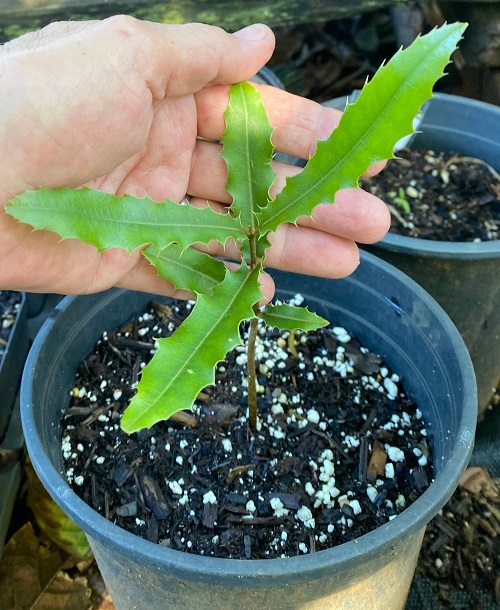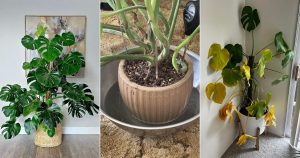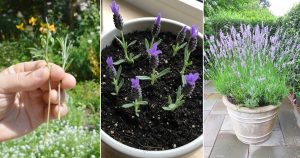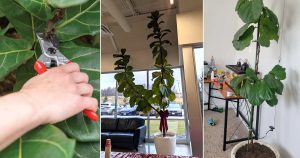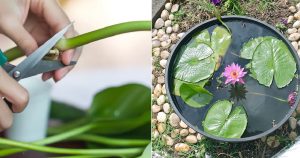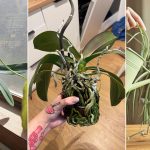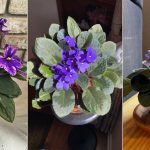Macadamia Nuts Tree is commercially grown for producting nuts, it is also planted for ornamental uses and as a shade tree.
The Macadamia Nuts Tree is native to New Zealand and Australia; it is a genus of four diverse species, of which two are used for producing nuts. This evergreen tree can reach up to 30-50 feet high and 20-40 feet wide. It produces glossy, oblong leaves and scented pink-white blooms that are followed by creamy-white nuts enclosed in a hard shell.
It starts bearing fruits in 6-7 years.
Botanical Name: Macadamia spp.
USDA Zones: 9-11
Propagating Macadamia Trees
If grown from seeds or cuttings, it will take 10-12 years to establish and produce nuts. So, it would be better to purchase a plant from grafted rootstock and save time.
Macadamia trees used in crop production are typically grafted onto a hardy rootstock cultivar that is chosen for its robustness rather than its fruit production. Taking a cutting from these trees results in losing the hardiness of the original rootstock. However, air layering is the most effective method if you still wish to propagate through cuttings.
Types of Macadamia Tree
Macadamia trees come in four species, and many hybrids exist between these species, as well as large quantities of commercial cultivars and grafted selections.
- Macadamia tetraphylla: It can reach up to 32 feet tall and offer sweet nuts.
- Integrifolia: This self-pollinating tree grows up to 50 feet tall.
- Macadamia jansenii: This critically endangered variety has just 100 trees in the wild.
- Ternifolia: It produces bitter nuts and grows up to 26 feet tall.
Requirements for Growing Macadamia Tree

Light
Choose a location that gets 6-8 hours of full sun. In lack of sun exposure, the growth slows down, and the tree will produce fewer blooms and fruits.
Soil
Before planting the Macadamia tree, check the acidity of your soil, as the required pH range is 5.5-6.5. This tree favors well-draining, rich, moist soil.
Water
In its native habitat, the tree gets at least 50 inches of rain yearly. During the initial growing stage, regular watering is essential for the first season when it forms fruits.
Keep in mind that the macadamia tree needs plenty of water, which is tough to provide for constantly for its full life. So, it will be best to grow it in a greenhouse in controlled surroundings. Planting it in a greenhouse needs root pruning to turn it into a bonsai.
Temperature and Humidity
The macadamia tree is originally from Australia and New Zealand. It can grow in only a few places in the United States. Hawaii is the most notable of these locations, although it is a common misconception that the macadamia is native to the Hawaiian Islands, sometimes called the “Hawaiian Nut.”
Besides Hawaii, the macadamia tree can thrive in Florida, southern Texas, California, and the Gulf Coast when provided it has warm weather and sufficient moisture. The USDA suggests growing macadamia trees in zones 9-11, but adequate rainfall is also essential for their growth.
Macadamia Tree Care
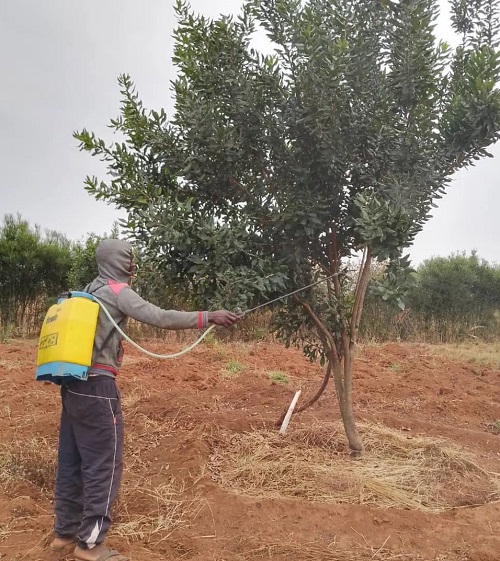
Fertilizer
Feed the tree annually when it is established, which occurs 7-10 years after planting. Fertilize the tree using low nitrogen, phosphorus, and high potassium in a 0-0-50 NPK ratio. Sulfate of potash is a good option.
Pruning
Macadamia trees naturally develop a vase-shaped crown, which makes them ideal for ornamental use. For these purposes, the only pruning required is annual maintenance to remove any dead, dying, or damaged branches.
If you want to cultivate the tree for fruit production, you’ll need to prune it to maximize sunlight and airflow to encourage abundant yields. Start by visualizing a cone around the tree and gradually remove branches over the first few years to shape it accordingly. Be careful not to remove more than one-third of the material of your tree in a single year.
Pests and Diseases
There are no serious pests or disease problems in this tree. After it reaches maturity, the biggest issues you can face are deer and rodents. You can avoid this problem by being aware of ripened fruit and checking for the macadamias that fall on the ground and attract wildlife.
Wounds from weed whackers or unclean pruning tools often cause this. Common indicators include cankers or dark lesions. Macadamia trees are particularly vulnerable to Anthracnose and Phytophthora ramorum.

